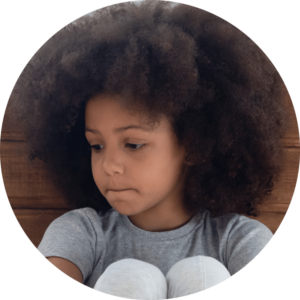Note: This article was originally published in the Summer 2004 edition of Cutting Edge, the online newsletter of The Meadows.
We Are All Neighbors
By Peter A. Levine, PhD.
What has happened to our world? Why this large-scale killing, maiming and torture as human populations increase in number and complexity – and as their access to Ethernet information grows each year, seemingly in inverse proportion to their compassion? Even when competing for their most basic resources – food and territory – animals typically do not kill members of their own species. Why do we?
While there are many theories of war, post-traumatic stress is one root cause not widely acknowledged, even though it is the single most important instigator of the perverse cruelty of modern warfare. Mankind’s history of war, xenophobia and genocide has generated a legacy of trauma-induced dysfunction fundamentally no different from that experienced by individuals, except in its scale. There remains, however, an enormously important question: Can recovery from trauma be replicated on a larger, societal scale, with similar healing effects? At The Meadows, this has become our living promise.
 Let us review what happens when a person is traumatized. First, his internal system remains aroused; he is always on edge, unable to relax or tune down. He is constantly aware of a pervading sense of danger, suspicious of everything and everyone. Not knowing why he feels threatened, this fear and reactivity escalate. This, in turn, amplifies the need to identify the source of the threat. Propelled by a tremendous terror and rage lurking just beneath the surface, he is unconsciously driven into re-enactments to help regulate the ongoing escalation of arousal.
Let us review what happens when a person is traumatized. First, his internal system remains aroused; he is always on edge, unable to relax or tune down. He is constantly aware of a pervading sense of danger, suspicious of everything and everyone. Not knowing why he feels threatened, this fear and reactivity escalate. This, in turn, amplifies the need to identify the source of the threat. Propelled by a tremendous terror and rage lurking just beneath the surface, he is unconsciously driven into re-enactments to help regulate the ongoing escalation of arousal.
Imagine now an entire population of people with a similar post-traumatic history. In fact, imagine two such populations located in the same geographical region, perhaps with different languages, religions and traditions. What will happen? Croatian civilians are sawed in half by Serbian soldiers. Atrocities are committed, in turn, by Croatian troops. Dozens of truces are called, and each time the result is the same: The urge to kill and destroy takes over, and insanity once again prevails. The Serbs and Croats have been repeating their violent patterns as virtual instant replays of World Wars I and II. Middle Eastern nations can readily trace their wars to Biblical times. Even when wars do not repeat with the kind of ferocity and brutality seen regularly around the globe, suffering in the form of societal dislocation, child abuse and other forms of hatred will. There is no avoiding the traumatic aftermath of war; it reaches into every segment of society.
Transforming Cultural Trauma
Trauma is an inherent part of the primitive biology that brought us here, biology which cannot be changed without completely redesigning us, down to our very cells. To release ourselves from reenacting our traumatic legacy, both individually and as a society, we must transform it. We can do so only by addressing the problem at its roots: in our physiology.
Several years ago, Dr. James Prescott, then at the National Institute of Mental Health, engaged in some important anthropological research on the effects of infant and child rearing practices on the prevalence (and absence) of violence in aboriginal societies. He found that the societies in which child rearing was characterized by close physical bonding and stimulation through rhythmical movement had low incidences of violence. Conversely, the societies with diminished or punitive physical contact with their children showed clear tendencies toward violence in the forms of war, rape and torture.
As we know from the studies of Dr. Prescott and others, the time around birth and infancy is a critical period. It is then that the infant associates the states of its parents with basic security and ability to regulate arousal. When parents are traumatized, they have difficulty imprinting their young with this sense of basic trust and resource. And without this sense of trust, children are more vulnerable to later trauma. One solution to breaking the cycle of cultural trauma is to involve infants and their mothers in an experience that generates trust and bonding before the child has completely assimilated the parents’ anxious state. [perfectpullquote align=”right” bordertop=”false” cite=”” link=”” color=”” class=”” size=””] One solution to breaking the cycle of cultural trauma is to involve infants and their mothers in an experience that generates trust and bonding before the child has completely assimilated the parents’ anxious state.[/perfectpullquote]
In Scandinavia, I am involved in some exciting work inspired by my Norwegian colleagues. This project uses what we know about this critical period around infancy to allow not just one individual, but an entire group of people, to begin transforming the trauma of their past encounters. This method of bringing people together requires a room, a few simple musical instruments and some blankets strong enough to hold a baby’s weight.
The process works as follows: A group of mothers and infants from opposing factions are brought together at a home or community center. The encounter begins with this heterogeneous group of mothers and infants taking turns teaching one another simple folk songs of their respective cultures. Holding their babies, the mothers dance while they sing the songs to their children. A facilitator uses simple instruments to enhance the rhythm in the songs. The movement, rhythm and use of voice in song strengthen the neurological patterns that produce peaceful alertness and receptivity. As a result, the stuckness and fixation produced by generations of strife begin to soften.
At first, the children are perplexed by the events, but they soon become interested and involved. They are enthusiastic about the rattles, drums and tambourines the facilitator passes to them. When not provided with rhythmic stimulation, children of this age do little more than try to fit such objects into their mouths. In this situation, however, the children join in generating the rhythm, with great delight, squealing and cooing.
Because these infants are not blank slates, but highly developed organisms even at birth, they send signals that activate their mothers’ deepest senses of serenity, responsiveness and biological competence.
In this healthy exchange, the mothers and their young engage in an exchange of mutually gratifying physiological responses that, in turn, generate feelings of security and pleasure. It is here that the cycle of traumatic damage begins to unravel.
The transformation continues as the mothers place their babies on the floor and allow them to explore. Like luminous magnets, the babies gleefully move toward each other, overcoming barriers of shyness as the mothers quietly support their exploration from a circle around them. The joy and mutual connection generated by their small adventure is difficult to describe or imagine – it must be witnessed.
The group then continues, with smaller groups of a mother and infant from each culture working together. Two mothers swing their infants gently in a blanket. These babies aren’t just happy; they are completely blissful. They generate a roomful of love so contagious that soon the mothers are smiling and bonding with members of a community they earlier feared and distrusted. The mothers leave with renewed hearts and spirits they are eager to share with others. The process is almost self-replicating.
Once a group of people has participated in the experience, the group can easily be trained to replicate it. The impact of this experience is so powerful that participants want to spread it throughout their communities, and many of them do so. The beauty of this approach to community healing lies in its simplicity and effectiveness. An outside facilitator begins the process by leading the first group.
The experience offers a gentle alternative to the destructive cycle of trauma, suffering and violence by allowing the biological imperative for natural bonding and love to assert itself. Resistance to stress and trauma, the development of basic trust, and the capacity for enduring personal and peaceful relationships are forged during a critical period of life.
Developing physiological and neurological patterns give us the instinct of the animal and the intelligence of the human being. Lacking either, we are doomed to act out our hostilities. With the two working together, we can advance on our evolutionary path, utilize all our human capacities and bring our children into a world that is safe.
Non-traumatized humans prefer to live in harmony. Yet traumatic residue creates beliefs that we are unable to surmount our hostility and that misunderstandings will always keep us apart. It is imperative that we make every effort to discover and teach treatment modalities like the Scandinavian model I described previously. We must be passionate in our search for effective avenues of resolution. Not just peace, but survival, depends on it.
[perfectpullquote align=”full” bordertop=”false” cite=”” link=”” color=”” class=”” size=””]Nature cannot be fooled. Evolution happens as a result of forces that threaten to destroy the species. Trauma is one such force.[/perfectpullquote]
Cutting Edge Editorial Board comments in response to this article:
The theory of childhood development and immaturity developed by Pia Mellody and its application to the patients at The Meadows is a most encouraging demonstration of how post-traumatic stress can be treated and individual destinies turned to the path of self-knowledge and relational peace. And while The Meadows applies its processes of analysis and recovery to individuals, at its center lies a template that we must apply on a broader societal scale.

